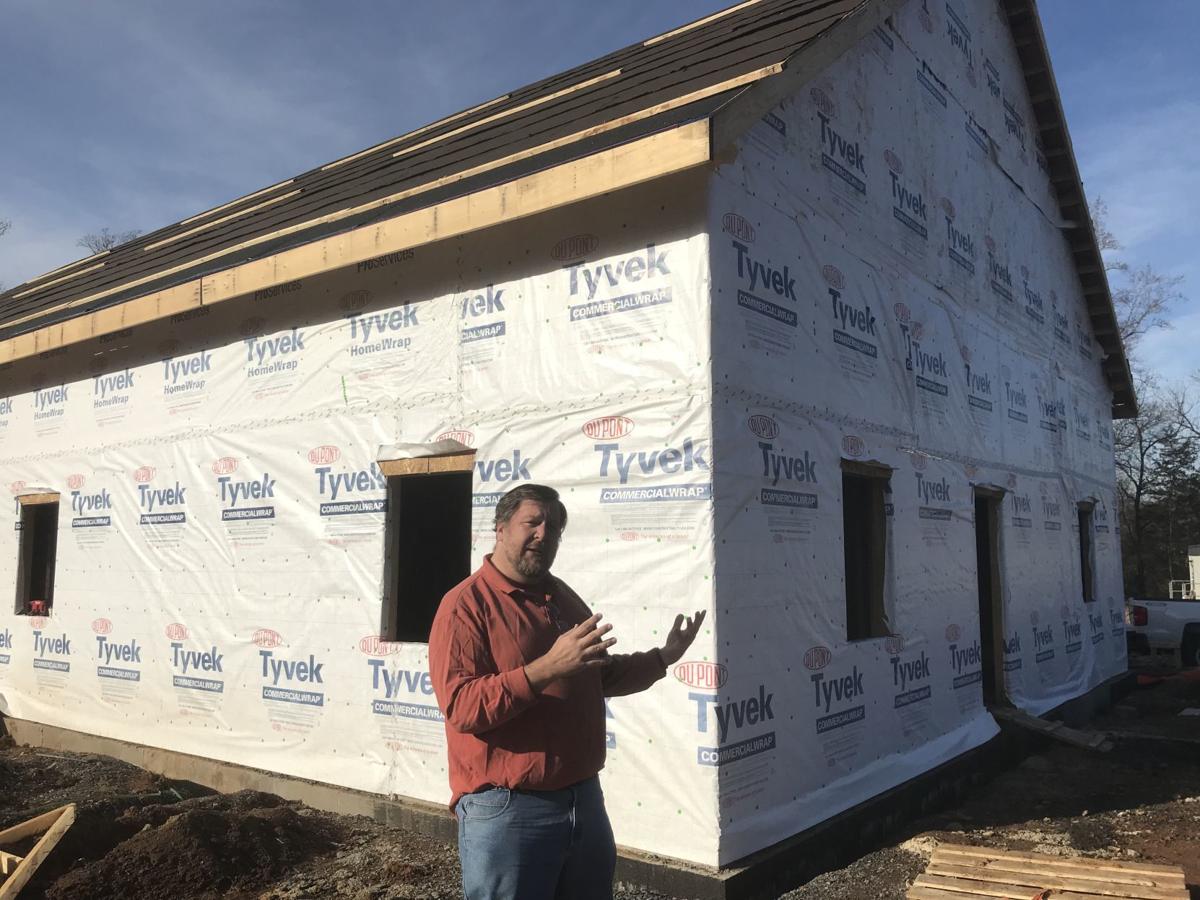An article about the new Hitt Archaeology Center appeared in the Culpeper Star-Exponent written by Clint Schemmer:

An archaeologist’s dream is rising along Germanna Highway where it crosses the Rapidan River.
As passing motorists can glimpse, an imposing two-story structure is under roof beside the Germanna Foundation’s Brawdus Martin Visitor Center. When complete, it will offer a research facility with few peers in the Fredericksburg region.
The archaeology center will house the nonprofit foundation’s researchers, summer field-school students and archaeological collection, which has been gathered over years of excavations at Colonial governor Alexander Spotswood’s nearby “Enchanted Castle” mansion and elsewhere.
Construction of the center will fulfill a years-old hope of researchers at Germanna, where archaeology has been occurring—off and on—for more than 30 years. The building speaks to the nonprofit’s ambition to build a long-term program to explore the below-the-surface resources of its four historic properties, which include a palisaded Colonial fort, Spotswood’s opulent mansion, and a courthouse village.
“The foundation wanted to restart archaeology here,” Eric Larsen, its director of archaeology, said in an interview last week. “None had been done for about a 20-year period.”
That requires both field work, the digging in the dirt with which the public is familiar and the less-noticed laboratory work that goes on afterward. The latter need prompted the Hitt Archaeology Center, which the foundation has named after one of the prominent German families who settled here in the early 18th century.
“There are two sides to archaeology,” Larsen said. “ … After an excavation, what do you do with the artifacts that you find? We needed space to begin to preserve, wash, catalog, lay them out on tables, and figure out what information can we learn from them.”
Germanna Community College’s neighboring Locust Grove Campus has loaned the foundation space for its archaeology lab for the past couple of years, but sharing a classroom with students has proven its own challenge. The college’s campus was built on land donated for that purpose by the Germanna Foundation in 1969.
In October, the foundation broke ground on its 3,000-square-foot archaeology center.
Once finished, it will include office space for operations staff, a kitchenette and break room, a wet-sink area to wash artifacts, and a large, multipurpose room that can house field-school work during the summer, as well as public programs. Another large room, with lots of shelving, will be devoted to housing artifacts.
“Storage space is the part of archaeology that people don’t think of very often,” Larsen said. “Everything we recover from the field has to be stored as part of a permanent collection.”
Foundation officials began discussing the center several years ago. They broke ground for it in October, with regional officials in attendance. Contractors poured the center’s concrete floor in November, erected its roof rafters and attached its sheathing in December.
“It’s amazing to see this pop up and take form. You can actually get a sense now of what it’s going to look like, and what its interior spaces will be like,” Larsen said.
“We still have a long way to go to finishing all the utilities, windows, doors and drywall. But it’s moving along.”
By Memorial Day, Larsen hopes the center will be ready to welcome the summer season’s field-school students from Virginia Commonwealth University.
Generations of archaeologists explored Jamestown and Williamsburg over the past century, Foundation President Marc Wheat recently noted. Now is the time to better understand Germanna’s contributions to American culture, he said.
The foundation’s Locust Grove properties were home to two German colonies of 1714 and 1717 on what was then the Eastern frontier, and the center of operations for Virginia Gov. Spotswood’s personal holdings of 80,000 acres.
“We’re hoping to be able to tap into all of those different stories,” Larsen said.
Germanna’s narrative is much wider than just that of its colonies’ estimated 2 million descendants—it is national in scope, he said
“We’re standing on the Colonial frontier. A lot of times we think of the American frontier being out west, the Frederick Jackson Turner idea of Manifest Destiny in the 19th century,” Larsen said. “But that also happened here at Germanna, much earlier, with very different cultures meeting one another—Germans, English, enslaved Africans who were imported as labor, and the native Americans who had been here for thousands of years.
“The English were living on the edge of empire, and so they had a lot of problems to figure out. All of that was taking place right here, in our backyard.”
The foundation acquired the site of Spotswood’s mansion in 2013 and hired Larsen to stabilize its remains, survey the property and begin to collect new archaeological data.
The Memorial Foundation of the Germanna Colonies in Virginia Inc. was chartered in 1956 to preserve the heritage of the earliest organized settlements of Germans in Colonial Virginia. Its mission is to tell America’s story through archaeological, historical and genealogical research and interpretation.
Since 2016, the Germanna archaeology program has been searching for the 1714 site of Fort Germanna, a palisaded enclosure the settlers built to protect themselves from Indian attack.
